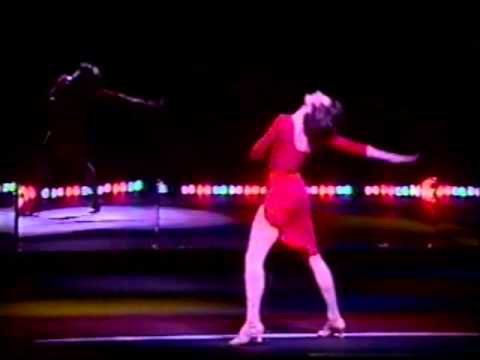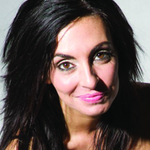
“ALL I EVER NEEDED WAS THE MUSIC AND THE MIRROR.” -CASSIE, A CHORUS LINE
As a dance teacher, think about the aforementioned famous quote for a second. Think about all your years of training and the “norm” which makes up a technique class. Think about the format, the environment, the habits in which we learn dance and teach dance. Think about your dancers and the way they absorb information or learn new material, rely on or compare themselves to other dancers day in and day out. Think about how they watch you and what their vantage point is as a student. Think about where they habitually stand during warm-up.
The “mirror” is a dancer’s best friend. We are constantly in it, self-assessing, comparing, watching, learning, deconstructing, creating, sometimes obsessing, fixing, and so on and so on.
As dancers, this is what we do. The mirror in the studio is just as an important tool as one’s dance shoes. Think about a studio without one. Seems counter-productive right? To have one in the studio is as second nature as installing good flooring and ballet barres; prerequisites for a professional environment.
The mirror is undoubtedly a wonderful asset and essential teaching and learning tool to provide clear views of the teacher, choreographer, etc; as well as providing dancers the opportunity to examine and become accustomed to self-correction of proper alignment, technique, etc. It is also important to remember that dancers, like any students come to class with a variety of ways in which they learn best. Some are visual learners and some are auditory learners. Some need tactile correction while others need verbal. The mirror allows us to see all areas of the room and learn choreography to provide views of the general space and a glimpse into the overall “picture.”
What I challenge you with as a dance teacher, is to challenge your students to not be so reliant on that mirror all the time; to change it up. It often becomes so habitual to do warm-up the same way in the same direction, facing the mirror class after class that we run the risk of having them “check- out” after a while; slipping into “do and follow” mode. Consequently, they are not really learning new things about movement and their body because they are not “present” in the space.
Furthermore, think about your dancers who always place themselves right in the front of the class. They are the unspoken “leaders.” Now think about the dancers who always stand in the back of the class. Are they really paying as close attention to making sure they pick up the material? What would happen if you asked them to do the exercise one by one? Do you think they would really know it? Are they really invested in “mindful learning” or just going through the motions? Removing the mirror is the quickest way to assess your dancers and keep them on their toes during class.
If you think about structuring your class to do the following from the start of the year, you create a new norm for your class environment; setting a tone for your dancers to subliminally learn that not using the mirror is just as important as using the mirror.
**During your center warm-up, change facings with every exercise spontaneously, i.e. “Ok let’s do plies facing the back wall,” “tendus facing stage left, etc, etc.” What this does is ensure your dancers have to figure out and comprehend the material and you are constantly changing the leaders in the studio all the time. Everyone is then responsible for being in the front line at some point.
**A more advanced variation on this theme is to say, “face any direction you’d like other than front.” This allows the dancers to choose their facing but also challenges them to not become distracted by the dancer who might now be facing them doing the same exercise as a mirror-reflection to them. If it’s a center exercise that travels, it also forces the dancers to use their periphery and be spatially aware of how and where others are moving through the space without having the mirror to see where they are. (*I would reserve this approach for more intermediate-advanced dancers or use a very basic, stationary exercise for beginners.)
**Also, when you are starting class in center, tell dancers they are not to stand in the same spot as the previous class and change it up. While it is a bit difficult to keep track of this week to week what you can also do, like the facing-changes, is to tell them to also change their spot in the room with every couple of exercises instead. Both facing and spot changes is a lot for beginner dancers when they are also learning new material, so go slow introducing these new variations one at a time to get them accustomed to it. With my advanced dancers though, I throw both facing and spot changes and new material at them at once to keep them on their toes and alert at all times. It also doesn’t allow them to get too comfortable and forces them to stand next to others dancers they might not normally stand next to; which creates new dynamics and energy. (If you really want to keep them on their toes and throw them a curve ball, tell them to then reverse the combination or add complex coordinating arms, etc….)
While the mirror will always be one of a dancer’s best friends and provides a great amount of help and support during class and rehearsal, as a teacher think about changing it up every now and again and watch how it will enhance the learning process and sharpen the mindfulness and mental skills of your dancers!
Did You Know? That Dance Teacher Web is the LARGEST online resource for dance teachers and studio owners with 1000+ videos, 100's of articles and lesson plans so that you can stay current and creative all year long. For the busy Dance Studio Owner, we offer fantastic articles on topics like marketing, how to get more students and increase revenue, business building video seminars, downloadable manuals, sample ads and forms that can help you increase your profits 30% or more!
Think of us as your virtual Dance Teacher Conference.
Not yet a member? CLICK HERE to activate your membership now… It’s FREE!

